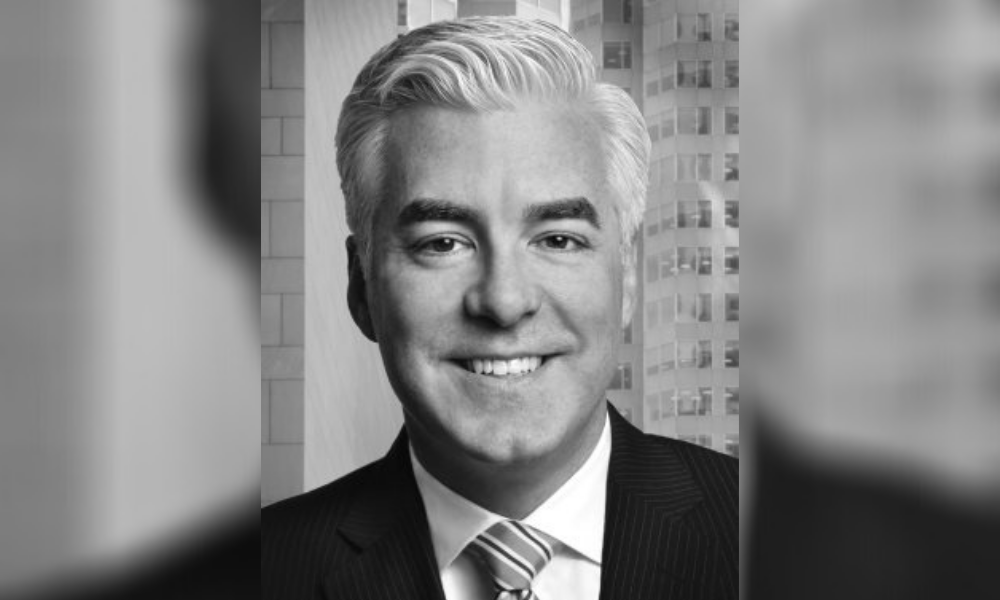Investment firm's focus on volatility and downside risk mitigation is validated with key milestone

Before Picton Mahoney made a name for itself by having the largest offering of liquid alternative funds in the Canadian market, the firm held a simple but powerful conviction: investors can reach their financial goals effectively using alternative investment strategies, including hedging, that aim to produce solid returns with certainty. That ideal was affirmed recently as the firm celebrated a landmark achievement.
Picton Mahoney’s Fortified Mutual Funds, which are designed to let investors access its unique alternative investment management capabilities in a mutual fund structure, officially reached their fifth-year anniversary on October 29, 2020.
“Our Fortified Mutual Funds use our proven approach which aims to manage volatility, mitigate downside risk and enhance the quality of returns for investors,” said David Picton, president, CEO, and portfolio manager at Picton Mahoney, in a statement. “We are pleased to celebrate this milestone while we continue to focus on our stated mission to help investors achieve their financial goals with greater certainty.”
The funds’ performance over the past five years have been objectively remarkable. As of October 31, 2020, the Picton Mahoney Fortified Multi-Asset Fund (Class F) had an overall Morningstar rating of 5 stars, a score based on a comparative analysis of monthly returns across 316 funds in the Tactical Balanced category. The Picton Mahoney Fortified Income Fund (Class F) also received a five-star Morningstar rating, which was awarded based on a similar analysis of 416 funds in the High Yield Fixed Income category. The last member of the triumvirate, Picton Mahoney Fortified Equity Fund (Class F), got a rating of three stars as it competed with a much wider field of 1,5465 other funds within the Global Equity category.
“We're now 16 years old as a firm, but for many years we have employed alternative investment strategies,” Michael White, portfolio manager and - at Picton Mahoney, told Wealth Professional.
White explained that by using alternative strategies, including hedging tools, the firm has been able to mitigate volatility and manage correlations in portfolios. The net effect, he said has been an experience that’s different or uncorrelated to what investors would see from traditional funds and asset classes.
“That focus on risk management allows us to build more successful long-term track records,” he said. “In a nutshell, if you can manage the downside experience significantly better, then you don't have to be so heroic when the opportunity comes to capturing upside as well.”
He explained that the five-star ratings for Picton Mahoney’s Fortified Fixed Income and Multi-Asset Funds are emblematic of the firm’s emphasis on sustained certainty in returns. Aside from looking at risk-adjusted returns, White explained that Morningstar’s rating system is time-weighted, which means the scoring methodology doesn’t just speak to risk-adjusted outperformance, but also how consistently it’s achieved over time.
“These five-star ratings are certainly a welcome testament to what we do in our mission statement, which is to help investors reach their financial goals with greater certainty,” White said.
From an investor perspective, five years is also an important number for Picton Mahoney’s mutual funds to hit. For many advisors and investors, that type of fund longevity provides firm evidence of a manager’s ability to execute a strategy – something the firm will want to point to as it promotes those same strategies in a liquid-alternative fund structure. A performance record that long also speaks to the strategies’ staying power through market cycles, which White said have historically been measured in five- to seven-year timeframes.
The current market cycle certainly promises to be a memorable one, if only for the whiplash-inducing dive that investors saw in the first quarter of 2020. “You could call that a market drawdown at warp speed,” White said. “The pace, vigor, and magnitude of that drawdown had not been seen in a long, long time. In many ways, that made the global financial crisis in 2008 look soft by comparison.”
That event provided an opportunity for many alternative strategies to shine. In Picton Mahoney’s case, having a hedging capability effectively softened the blow of the drawdown. It also left them in good position to capitalize on the quick market reset that happened as the full force of fiscal and monetary stimulus kicked in.
“You want to be able to capture some of that upside reasonably when it’s there on offer,” White said.
Right now, uncertainty is still fully on the menu for financial markets. The event risk posed by the U.S. presidential election is now in the rearview mirror, encouraging news has been trickling in on the COVID-19 vaccine front, and economies around the world appear to be holding up overall as the stimulus measures to deal with the pandemic remain in place. But given the probability that we’re on the cusp of a new economic cycle, White is expecting some degree of volatility and skepticism as the markets wrestle with some unresolved questions.
“For the most part, we see leading economic indicators as being pretty constructive. But there’s no question the real economy has suffered losses,” he said. “There will very likely be an unfortunate wake of headlines involving personal and business bankruptcies long after the economy gets back in gear.”
There’s also the natural fallout to be expected from the ongoing threat of COVID-19. While continued vigilance should be the watchword for both governments applying emergency stimulus measures as well as individual citizens in following public health protocols, many regions are still seeing aftershocks of infections as fatigue and frustration with restrictions set in.
We're monitoring all of those risks as closely as possible,” White said. “In the very short term, we see the opportunity to apply a little bit more hedging because the market has come a long way fast. We're not saying it's necessarily ahead of itself, but it has discounted the birth of a new cycle and we just want to be a little more prudent to protect some of those gains.”



